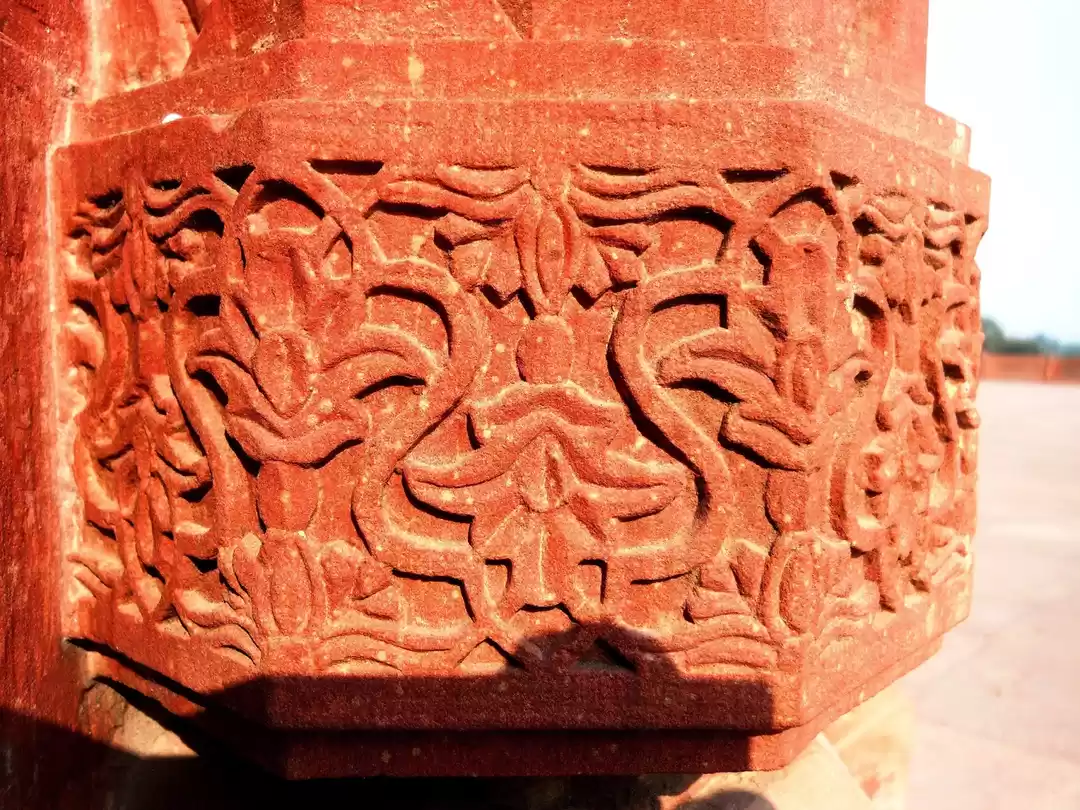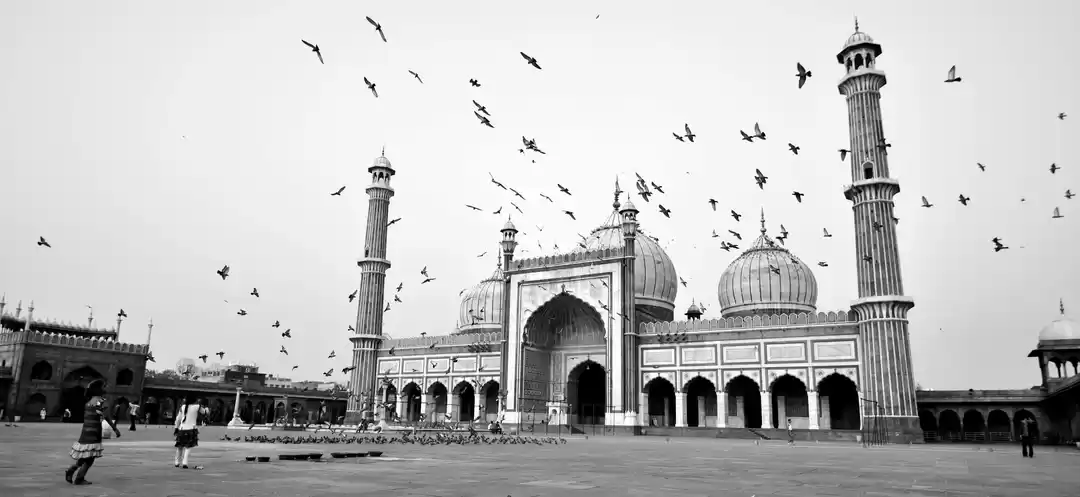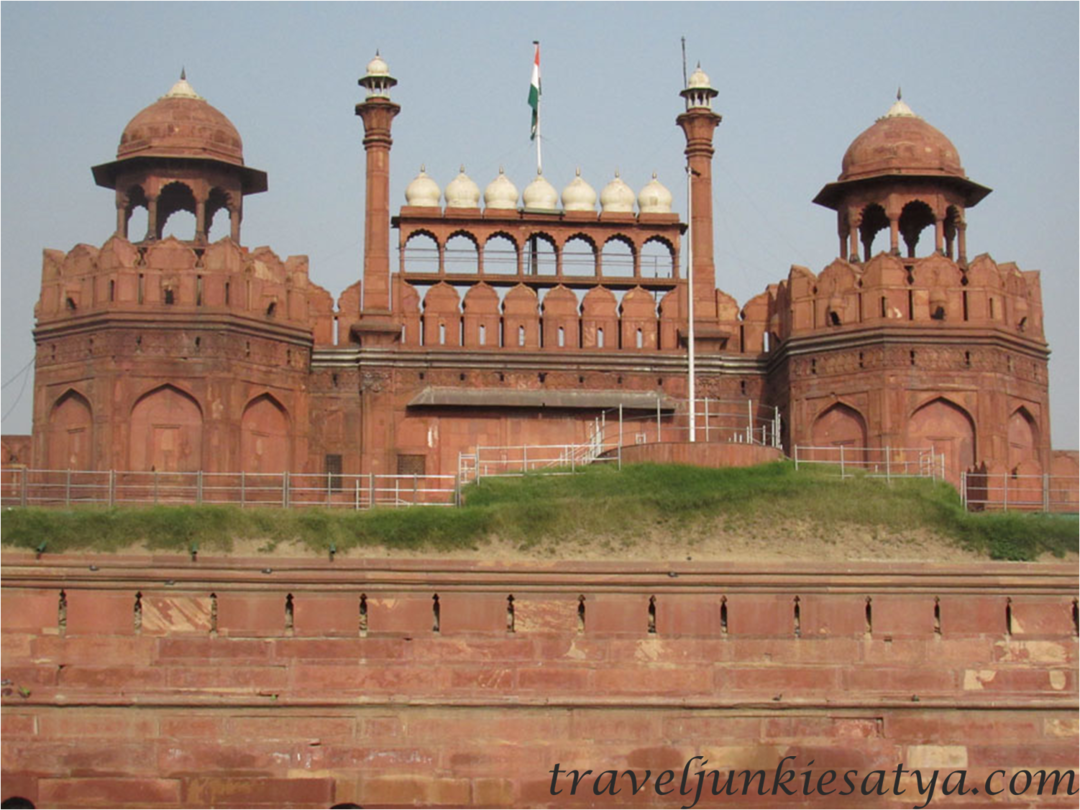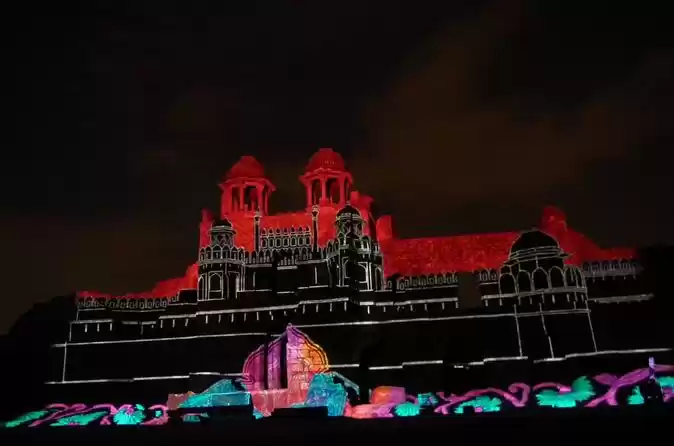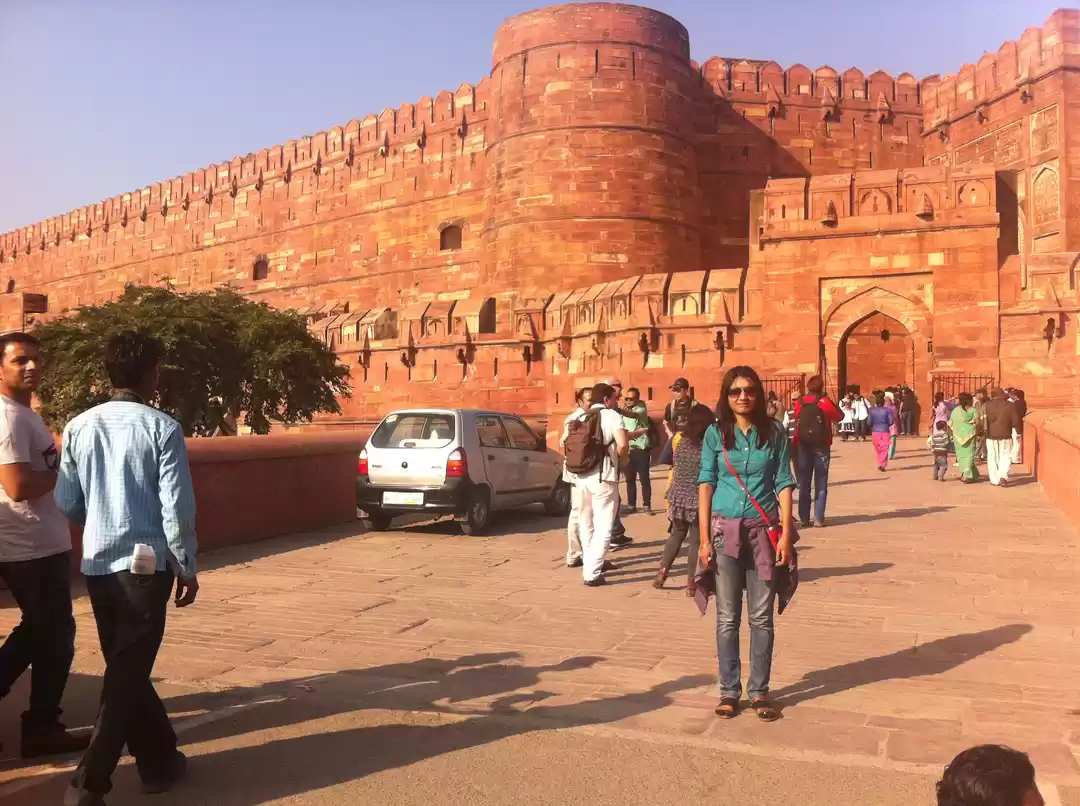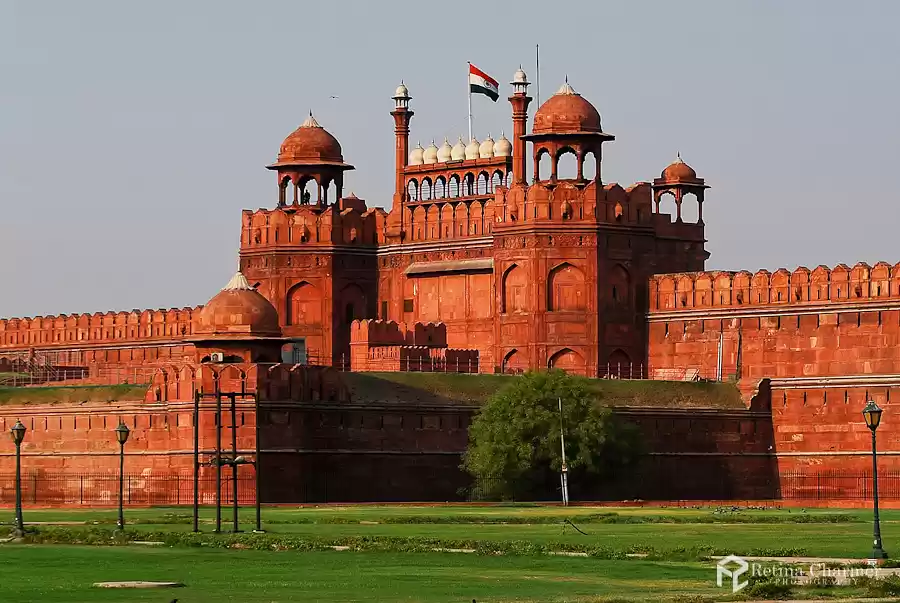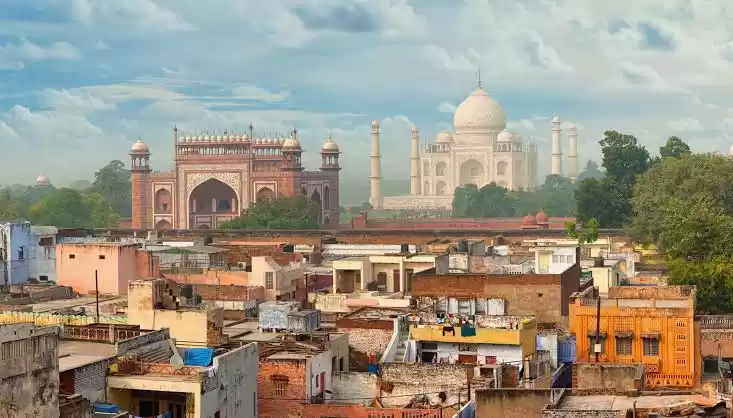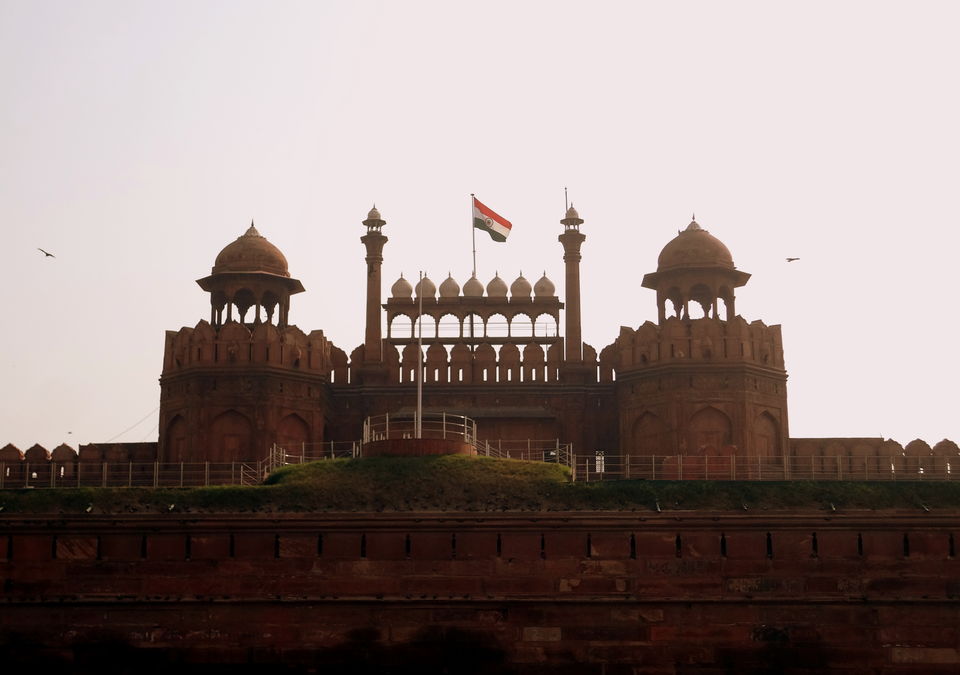
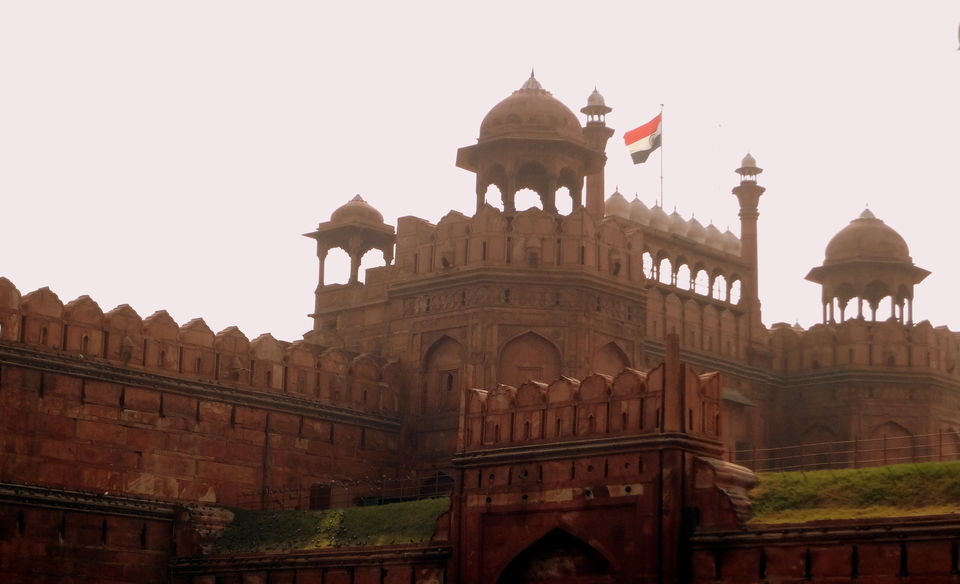
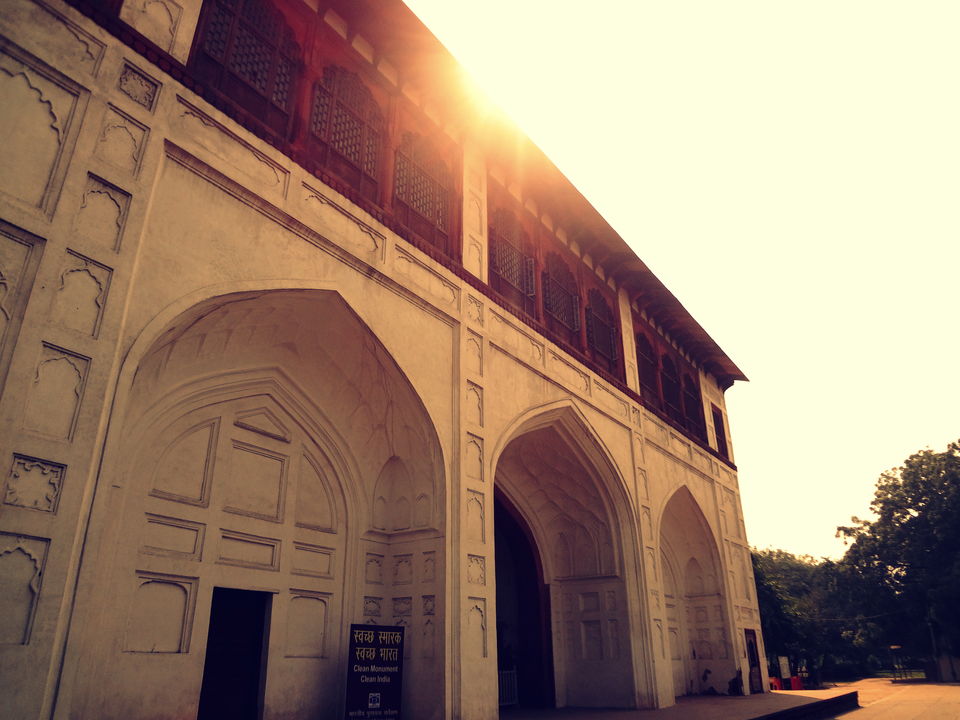
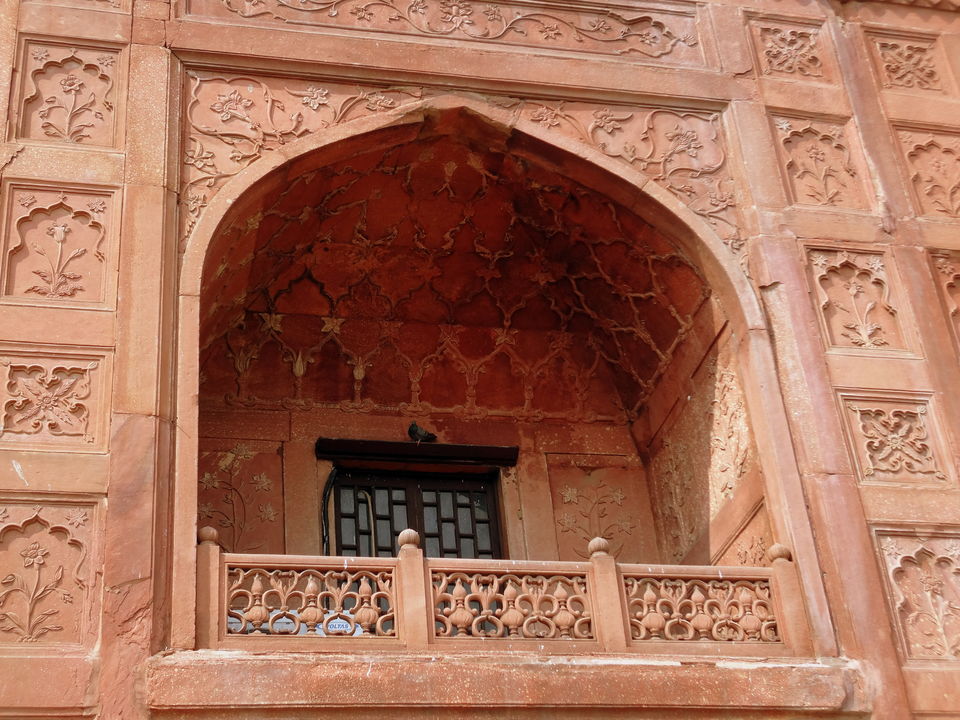
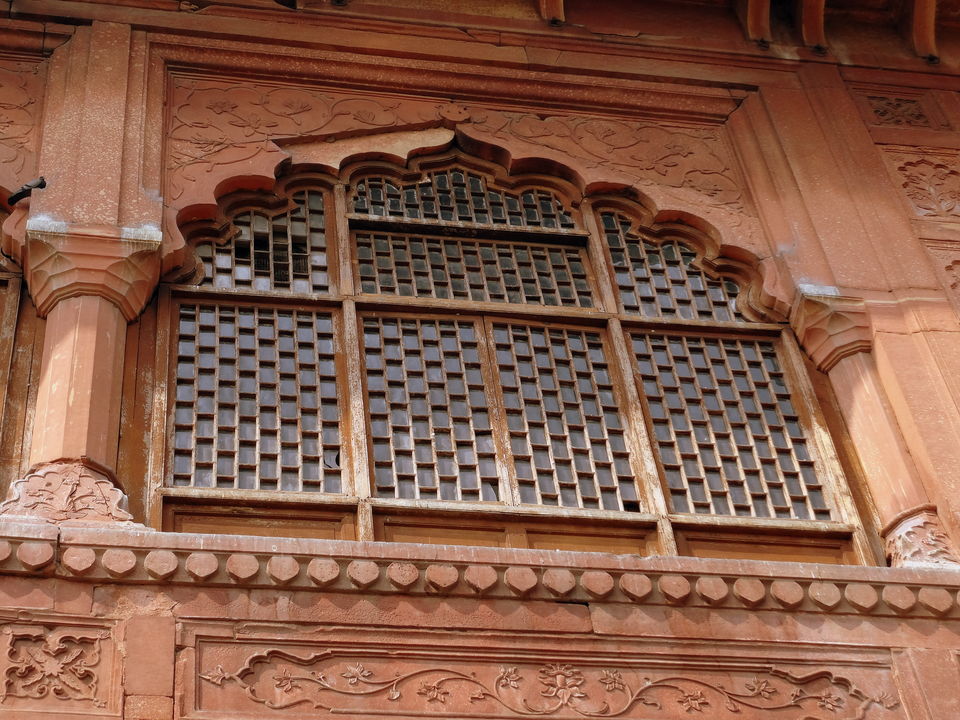
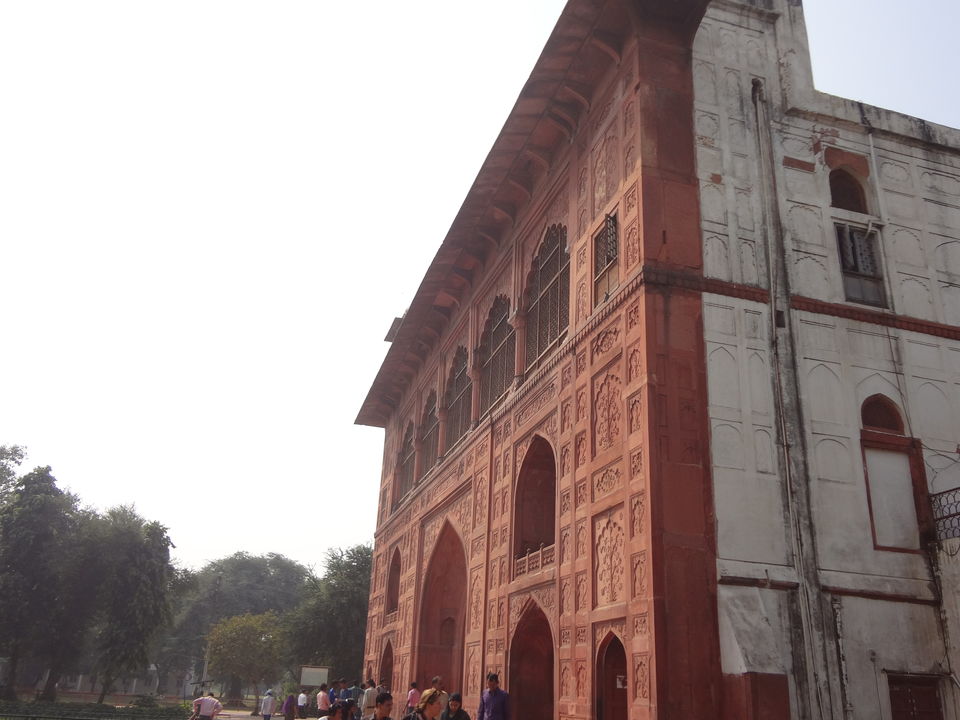
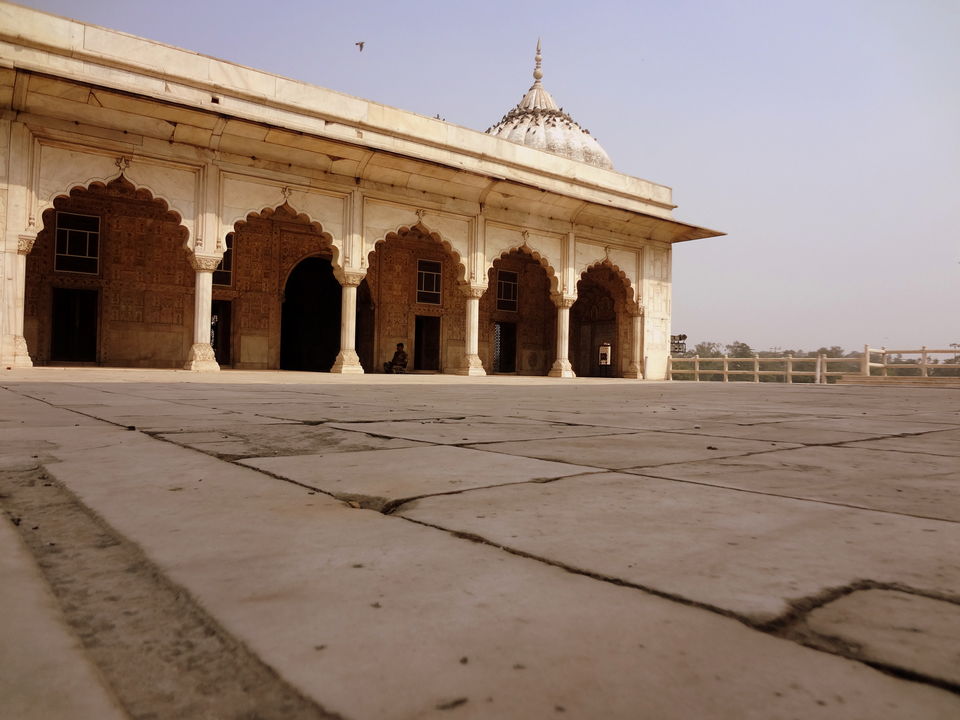
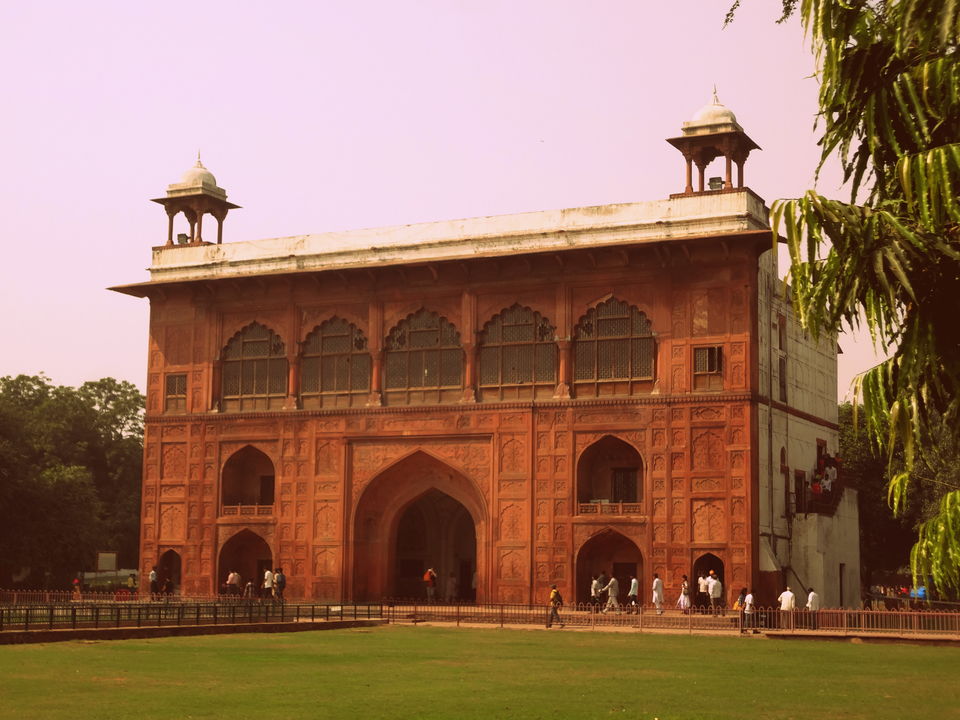
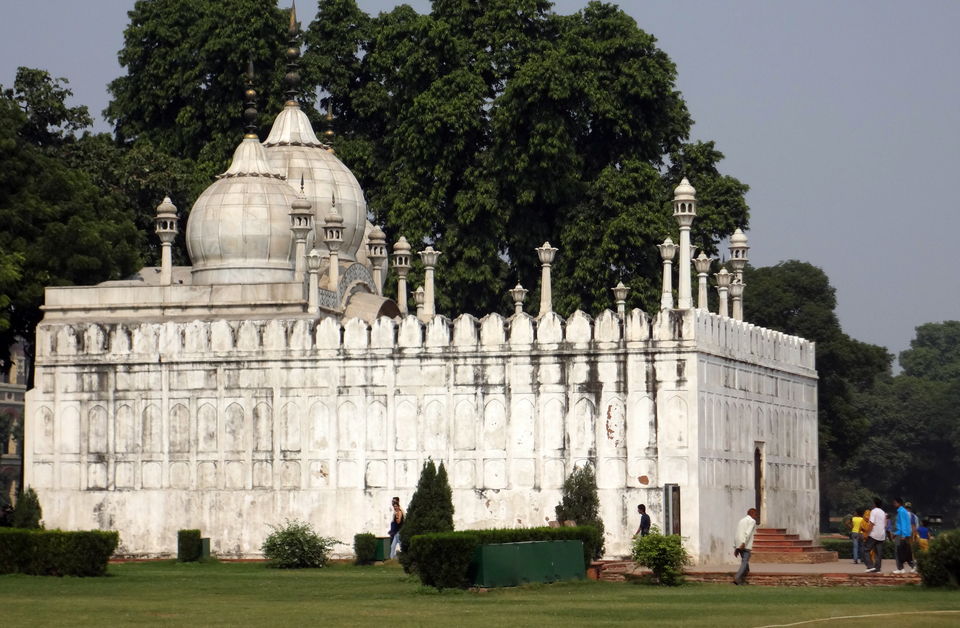
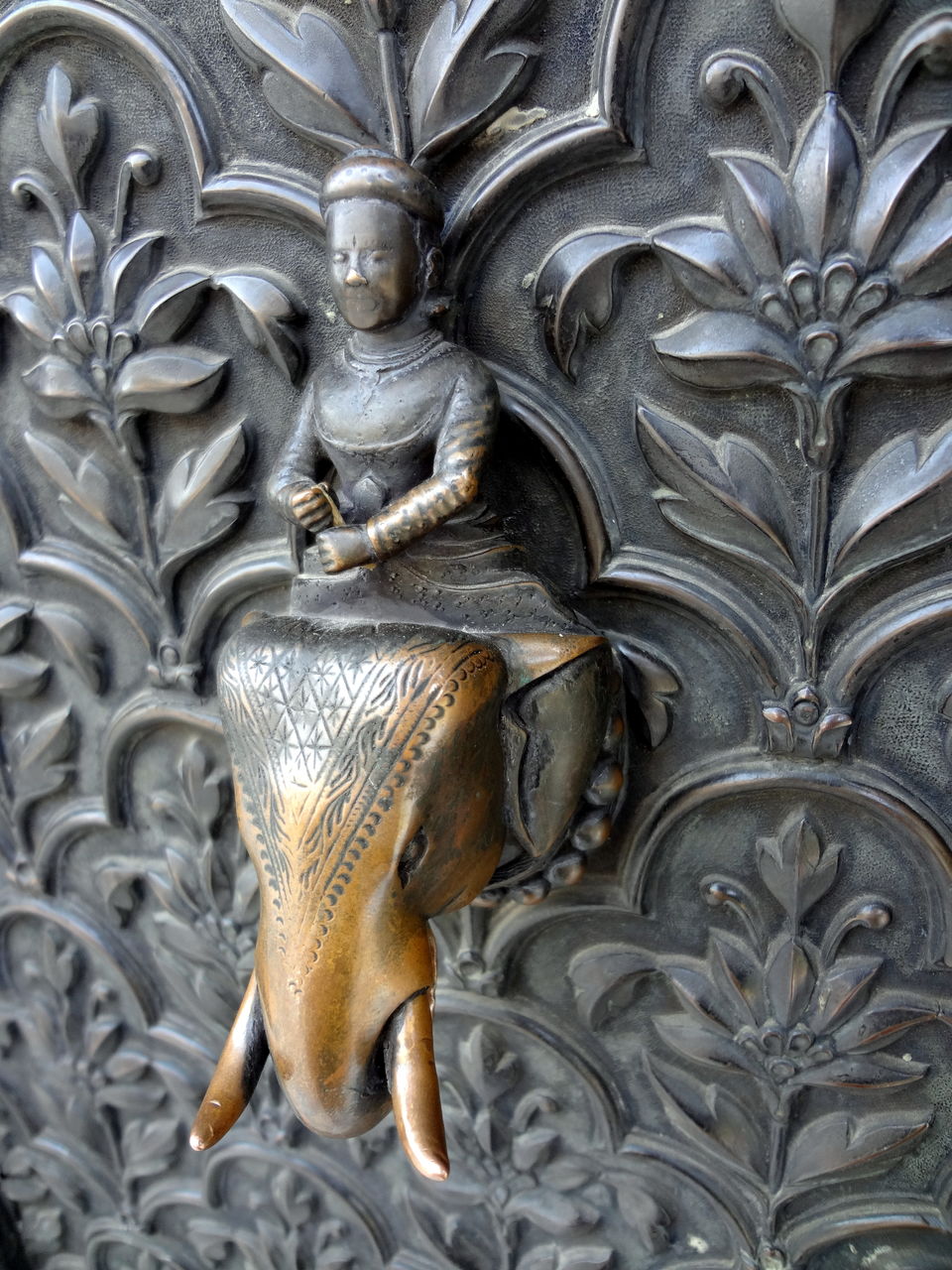
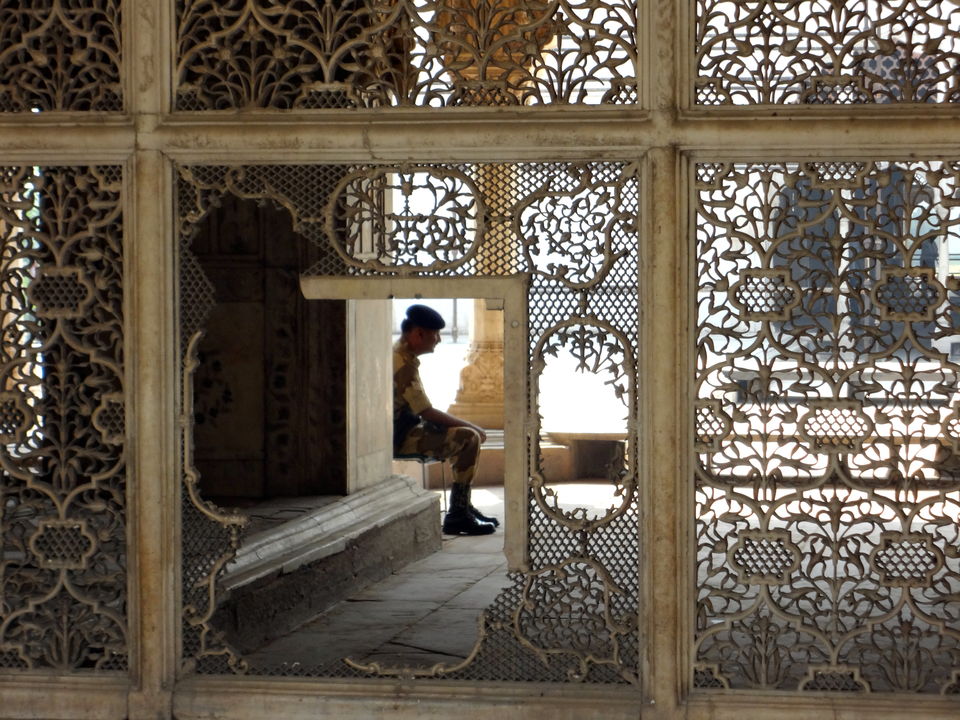

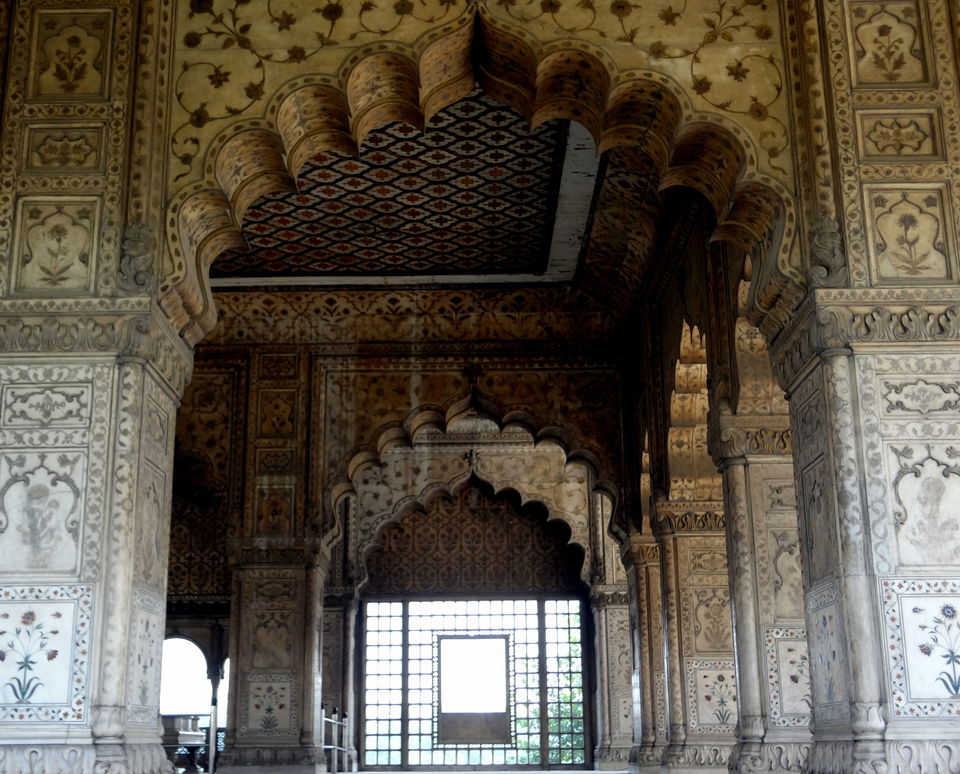
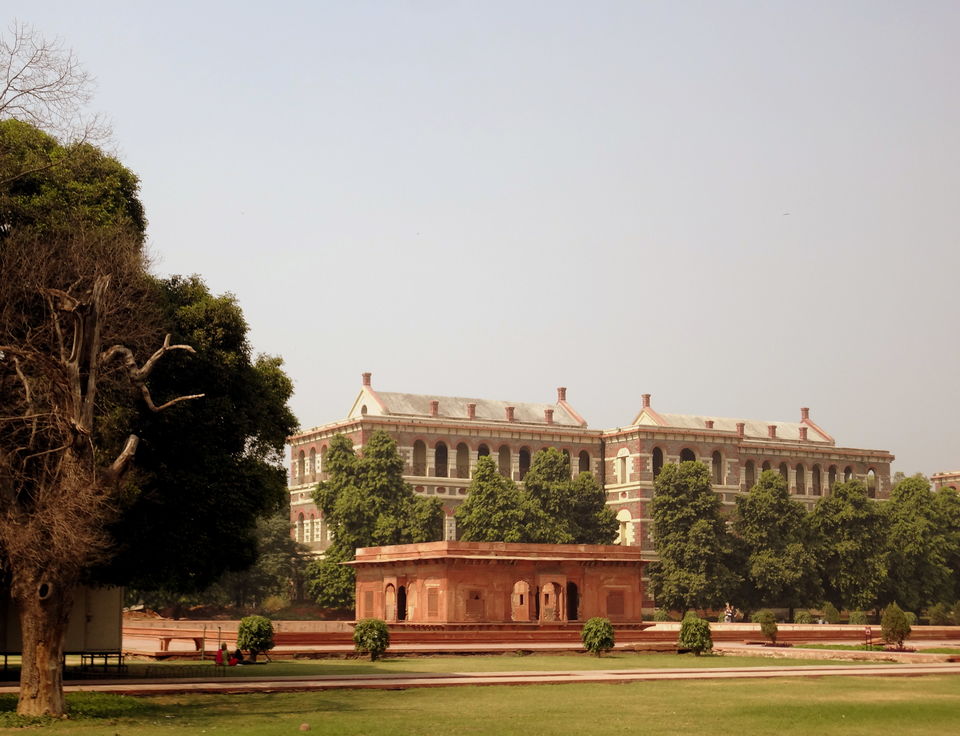
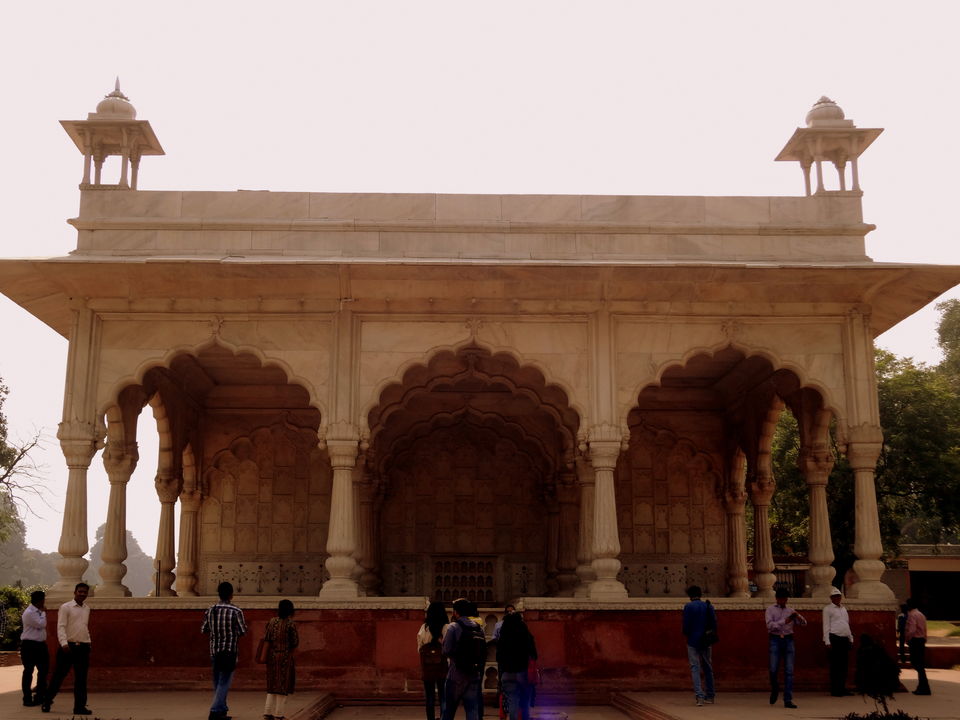
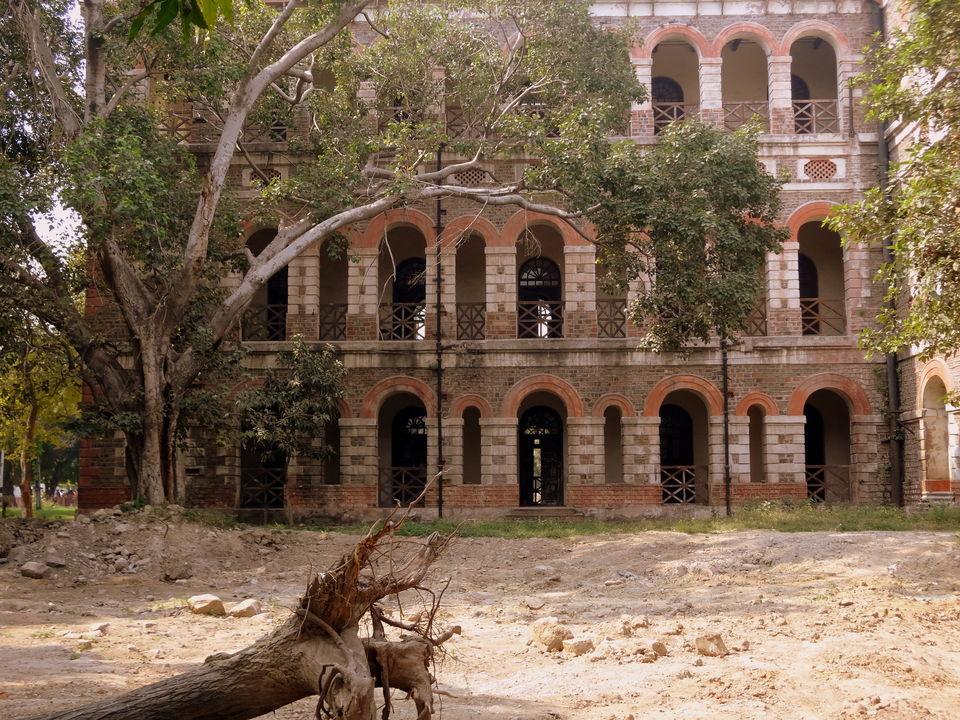
About Red Fort: Red Fort or Lal Quila, as we fondly call it, is one of the landmarks of not just Delhi but the whole of India. Once graced by the Mughal emperor Shah Jahan, it was a great display of the power and prestige of the Mughal Sultanate. In 1638, when Shah Jahan decided to move his capital from Agra to Delhi, the construction of Red fort began as the royal residence and was completed in 1648 and was originally named as Quila-i-Mubarak or Blessed Fort. It owes its ‘red’ appearance to the red sandstone walls which were popular at that time in the Mughal architecture. On 15 August, 1947, Pt. Jawaharlal Nehru, the first Prime Minister of India hoisted the national flag above Lahori Gate of the Red Fort. Since then, it became a custom and the Red fort became the synonym of Indian sovereignty and pride. It became a part of UNESCO’s World Heritage Site list in 2007.
Location: Old Delhi (formerly known as Shahjahanabad) , India
How to reach: Chandni Chowk is the nearest metro station. You can choose to walk from there (if you don’t mind walking through the busy narrow lanes of Purani Dilli) or take a rickshaw.
Entry Fee: Citizens of India and visitors of SAARC (Bangladesh, Nepal, Bhutan, Sri Lanka, Pakistan, Maldives and Afghanistan) and BIMSTEC Countries (Bangladesh, Nepal, Bhutan, Sri Lanka, Thailand and Myanmar) - Rs.10+Rs.5 (including the museum fee) per head.
Others: Rs. 250/- per head (Free entry to children up to 15 years)
Major Attractions:
1. Chhatta Chowk (the bazaar of the royalty)
2. Diwan-i-Aam
3. Diwan-i-Khaas
4. Shahi Burj
5. Sawan/Bhadon pavilion
6. Indian War Memorial Museum
7. Delhi Fort Museum
8. Sound-and-light show (every evening except ‘Monday’)
Best time to visit: Since you have no option but to cover the whole red Fort complex by walk, October - March is a preferable time.
Food: The fort faces the narrow lanes of Chandni Chowk which are loaded with old school dhaabas, restaurants, chaat walas and mithai shops which serve yummy north Indian cuisine at affordable prices. You can also spot big food chains like Haldirams and McDonalds.
Walk with Me: After loading you with all the trivia you need to know before you decide to visit our very own Lal Quila, let me show you around ;)
On a warm Sunday morning, I and my little brother Abhishek (a born humorist and an awesome photographer) decided to have a look at the Mughal history and nothing holds it better in Delhi than the Lal Quila.
On your way from the metro station to the red fort, as you enter the main road in Chandni Chowk you see the majestic red fort opening its arms on the other end of the straight road. After going through the security check, you find yourself standing in front of the Lahori gate where our prime Minister hoists our national flag on every Independence Day. Right there you have the 15 August Park that holds the audience on that day.
You can move further, take your entry tickets and put your luggage in the cloak room. You can feel a tiny portion of the splendor of the Mughals as you enter into the fort from the Lahori Gate. The first view after entrance is the little royal bazaar called Chhatta Chowk. It has around 15-20 little shops selling souvenirs, toys, bags, jewellery etc. Though a little overpriced, the shops do win your attention and hold interesting products.
After passing through the bazaar, you can walk to Naubat Khana ('Drum-house'). The upper storey of the Naubat Khana houses the Indian War Memorial Museum now. Then comes the Diwan – i- Aam (Hall of Public Audience) where you can imagine Shah Jahan listening to your plea! Going ahead you find Rang-Mahal, Nahr-i-Bihisht ('Stream of Paradise') and Mumtaz-Mahal, which now houses the Delhi Fort Museum.
Diwan-i-Khaas ('Hall of Private Audience') leaves you enthralled with the amalgamation of Indian and Mughal architecture. It is an ornamental hall embellished with engrailed arches and pillars. In its center is a marble dias which at one point of time, held the famous Peacock Throne before it was looted by Nadir Shah of Persia.
Beyond Diwan-i-Khaas is the area which used to be the royal residential complex. It consists of Tasbih-Khana ('chamber for counting beads for private prayers'), the Khwabgah ('sleeping-chamber'), Hammam (‘Bath’) and Hayat-Bakhsh-Bagh ('Life-giving garden'), Shahi Burj (emperor’s study area). The Hayat-Bakhsh-Bagh consists of a reservoir and channels. Saawan and Bhadon pavilions, named after the rainy and spring seasons embellish both the ends of the reservoir. Right at the centre of this reservoir is the Zafar Mahal made of red sandstone which was constructed by Bahadur Shah Zafar II later around 1842. You can also spot Moti Masjid which was constructed on the orders of Aurangzeb as his private mosque in 1659.
At north of Hayat-Bakhsh-Bagh and Shahi Burj is the Princes’ quarter which was destroyed by the Britishers and a part of it was converted into tea house for the British soldiers.
Throughout the walk in the complex, you can see the British barracks which were built for the British soldiers after the revolt of 1857. Their Victorian architecture is in sharp contrast to the Indo-Mughal architecture of the original red fort complex.
The are many buildings in the complex like the Hamman and Moti Masjid, which are closed to the visitors and we had to be content by the peering through the marble lattice works. I was disappointed to see that all the water channels, reservoirs and even Nahar-i-Behisht are dry now. With water flowing through them, it would have been a splendor. The walls and pillars which once glowed with the artistic pietra dura works were destroyed and looted. The ASI is on its way to restoring them.
One may also wonder why some of the buildings are white. During the British reign, the Britishers coated the splendid red walls of these buildings with lime coats which are several inches thick. Now, the ASI is slowly removing these unnecessary lime coats to bring these buildings back to their previous glory.
Lastly, you can’t afford to miss the sound-and light show which recreates the history of the Lal Quila for you. You can feel the goose bumps as they take you through the historical journey of this majestic and iconic heritage of ous!
Photo Courtesy - Abhishek Saini
If you would like to read more of my travel stories, please visit my personal blog at https://indianghumakkad.wordpress.com/


















